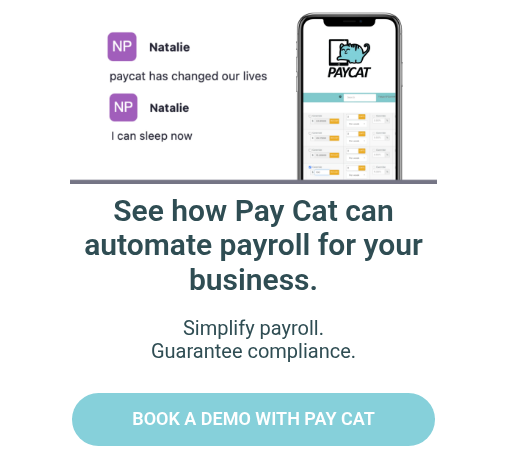As the end of the Australian financial year (EOFY) approaches, HR managers in Australia must ensure their payroll processes are accurate, compliant, and up-to-date. EOFY can be stressful, but with the right tips and tricks, you can easily navigate through this period.
This article will provide actionable advice to help you tackle EOFY payroll tasks efficiently and effectively.
- Ensuring employee details, such as names, addresses, and tax file numbers, are accurate and up-to-date
- Verifying superannuation fund information, including fund names, ABNs, and USIs
- Checking for any changes in employee circumstances, such as changes in employment status or salary
By keeping your employee information current, you can avoid potential errors and delays in processing payroll during EOFY.
- Reconciling payroll data with accounting records to ensure accuracy
- Identifying and correcting discrepancies, such as incorrect pay rates, leave balances, business income, or business expenses.
- All payroll transactions and financial statements, including superannuation contributions and PAYG withholding, are accurately recorded for your company tax returns.
- Generate payment summaries for each employee, including details such as gross payments, PAYG withholding, and superannuation contributions
- Ensure payment summaries are accurate and compliant with Australian Taxation Office (ATO) requirements
- Distribute payment summaries to employees by the due date, which is usually 14 July
It’s important to note that from the 2019-2020 financial year, the ATO has introduced Single Touch Payroll (STP), which means payment summaries are no longer required for employers reporting through STP.
- Prepare and lodge PAYG withholding reports and tax returns with the ATO, including the PAYG withholding annual report and the taxable payments annual report (if applicable)
- Ensure the reports are accurate and lodged by the due date, usually 14 August for the PAYG withholding annual report and 28 August for the taxable payments annual report.
- Keep records of all PAYG withholding reports for at least five years.
- Evaluating current payroll processes for efficiency and accuracy
- Look into whether your business structure is where it needs to be
- Identifying areas for improvement and implementing changes, such as automating manual tasks or streamlining workflows
- Considering automating payroll processes to save time and reduce errors
According to a survey by the National Australia Bank, 70% of small businesses in Australia spend up to five hours per week on payroll tasks. By automating payroll processes, you can free up valuable time and resources. Using AI can help you automate HR tasks like this.
- Keep up-to-date with changes in payroll legislation and regulations by subscribing to ATO updates and industry newsletters
- Attend webinars or seminars to stay informed about the latest payroll trends and best practices
- Consult with payroll experts, a tax professional, or professional organisations, such as the Australian Payroll Association, for guidance and support.
- Setting payroll goals and objectives for the new financial year, such as improving payroll accuracy or reducing processing times for small business owners
- Reviewing and updating payroll budgets to ensure they align with organisational goals and resources
- Communicating any changes to employees and stakeholders, such as changes in pay cycles or benefits. This will also allow them to keep up with any tax deduction obligations they have.
- Look into any financial year sales that can help you cut out any expenses holding you back in your payroll, such as automation or cloud payroll software.
Planning ahead can set your payroll team up for success in the new financial year.
- Review and update employee information to ensure accuracy and compliance. Use a registered tax agent to your advantage.
- Reconcile payroll data regularly, especially at EOFY, to identify and correct errors.
- Prepare and distribute payment summaries to employees by the due date (if not reporting through STP)
- Lodge PAYG withholding reports with the ATO accurately and on time
- Review and update payroll processes for efficiency and accuracy, considering automation where possible
- Stay informed about changes in payroll legislation and regulations
- Plan for the new financial year by setting goals, updating budgets, and communicating changes
- Understand and plan for potential tax deductions to maximise savings.
See how Pay Cat can simplify payroll for your business.
Who is Pay Cat?
Pay Cat are payroll specialists dedicated to helping Australian businesses simplify payroll and ensure 100% compliance with modern awards. As Employment Hero Payroll experts, we provide tailored solutions that streamline payroll processes, reduce errors, and save time.

